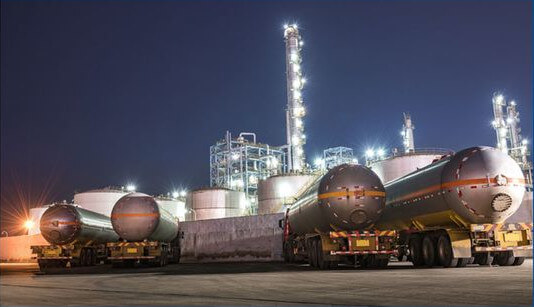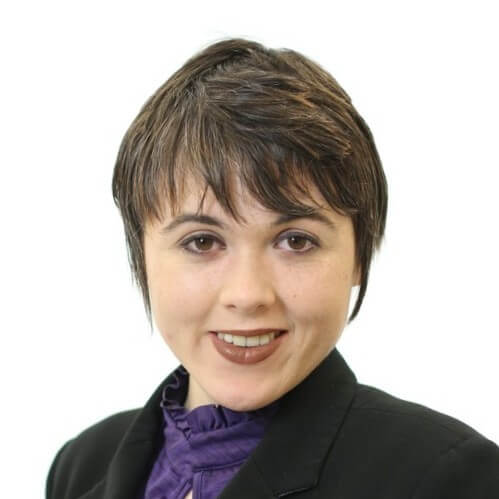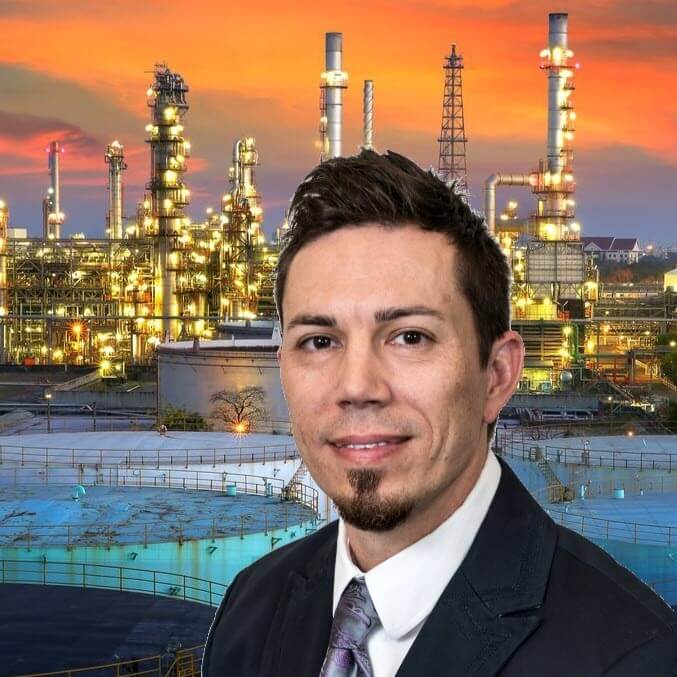 Your Terminal Management System (TMS) handles all the data and business logic required to secure site access to load (or unload) vehicles. The TMS communicates directly with a wide array of physical devices from gate controls to preset batch controllers, with the latter automating and controlling product flow. It plays a large part in your midstream process management and business strategy, as well as how efficiently your operation functions.
Your Terminal Management System (TMS) handles all the data and business logic required to secure site access to load (or unload) vehicles. The TMS communicates directly with a wide array of physical devices from gate controls to preset batch controllers, with the latter automating and controlling product flow. It plays a large part in your midstream process management and business strategy, as well as how efficiently your operation functions.
Effective TMS is measured by how quickly vehicles and vessels move in and out of the storage terminal facility. Also, how it’s tracking both current inventory and the commercial transactions. Additional truck leads to increased revenue. Optimizing this process is one of the first steps when looking to reducing costs and improving profitability
In this Optimizing Storage Terminal Capacity podcast series podcast, we are joined by Emerson midstream oil & gas expert, Ryan Thompson. Ryan highlights common challenges that terminal operators face, and how Emerson’s TerminalManager is designed to address these challenges.
Emerson’s TerminalManager can help:
- Reduce truck turnaround times
- Implement faster queuing and truck tracking
- Track accurate delivery inventory and report distributions
- Ensure quality control impacted by blending ratios
- Support device compatibility
- Reduce human-error that comes with manual processes
Podcast: Play in new window | Download (Duration: 13:39 — 14.9MB) | Embed
–>Visit the Optimize Terminal Capacity section on Emerson.com for on ways to maximize capacity yield and meet Top Quartile benchmarks through greater volume deployment, inventory turnover and revenue capture.
It’s time to put your TMS to work. We invite you to learn directly from our experts by tuning into other episodes in our Storage Terminal Capacity podcast series.
Transcript
Jim: Hi, everybody. I’m Jim Cahill. And welcome to another edition of our “Enabling Storage Terminal Capacity” podcast series. Today I’m joined by Ryan Thompson to discuss ways to achieve optimal truck and rail unloading rates to help improve operational capacity. Welcome, Ryan.
Ryan: Thanks, Jim. Great to be here.
Jim: Well, it’s great having you here. Can you share with our listeners your educational background and path to where you are today as a senior manager in Emerson’s Midstream Oil & Energy industry group?
Ryan: Sure. I started out with a degree in petroleum engineering from Texas A&M University and took a bit of turn by getting into the IT consulting industry first with Accenture, and then later joined Deloitte Consulting. I made my way back into the oil and gas field in 2008, more specifically into Midstream, and I’ve been there ever since. I originally focused on pipelines and commercial applications, but now I put all of my energy into terminals and operations management.
Jim: Well, that’s great and that’s a really interesting background with the IT consulting part in that, so that probably really helps as you work with terminal operators. So, can you tell us about a common challenge in the storage tanks and terminals industry today?
Ryan: Yeah. A common challenge that I see is a constant push to do more with less. And what that translates to is improving profitability while at the same time reducing manpower, and this inherently leads us to process automation. And with a terminal management system, often called TMS for short, there are opportunities to impact both sides of that P&L equation. The very nature of a TMS system makes it both an interesting and critical piece of the solution. It’s really where the rubber meets the road so to speak.
The Emerson TMS called TerminalManager handles all of the data and business logic required to secure site access and handle loading and unloading activities. TerminalManager communicates directly with a wide array of physical devices, and that is from gate control to weigh scales, to preset batch controllers, with the ladder automating and controlling the product flow, usually into trucks or rail cars.
Jim: So how can automating product unloading and offloading help in the context of increased revenue and cost savings?
Ryan: There’s usually a pretty strong correlation between terminal throughput and revenue. And with the automation of key processes, such as entry gates, way in and out, product loading, which includes blending and additization, TerminalManager can dramatically reduce the truck turnaround times. With faster turnarounds, a terminal can handle additional truck throughput and therefore higher product throughput as well. To further improve terminal traffic, TerminalManager offers some features such as slot booking, which is the scheduling of specific time slots for truckloads.
Gantry uses can also be optimized with our automated bay queuing feature, which uses an algorithm to assign truckloads to a loading bay so that they can get in and out as fast as possible. And for cost savings, the system automates a variety of processes and essentially allows a terminal to operate completely unmanned for truck loading. And you can imagine the potential for savings there. The system can identify and authorize the vehicle and the driver for entry, triggering the gates open, printing information such as driver loading instructions. And at the heart of the system is really the automation that I mentioned, the loading process itself. Handling the valve and pump control for accurate delivery of quantity and blending ratios.
So you can imagine the savings possible of not having a terminal operator sitting at the gate all day, checking IDs and license plates, or another operator sitting at the gantry, turning on pumps and opening valves. TerminalManager also can automate repetitive back-office-type processes, such as report distributions or transfers of data to another system like an ERP [Enterprise Resource Planning software]. Again, reducing that manual process as well as potential for errors. Terminal automation, as a whole, really reduces manpower needed and human mistakes.
That reduction in headcount can be a direct cost reduction, or those resources can also be freed up to do higher-value tasks, such as planning, scheduling, and optimization. So there’s quite a few ways that we can touch both sides of that coin, increasing revenue and also reducing costs.
Jim: Yeah, it certainly sounds like the more you can automate things, it becomes more predictable, less prone to mistakes, and everything else. That’s great. What other areas that might not tie directly to the bottom line could be positively impacted with a terminal management system like TerminalManager?
Ryan: I would have to say in terms of customer satisfaction is where I probably would look. You know, the terminal industry is very competitive, and keeping those customers happy is really paramount. If you take a look down at the Houston Ship Channel, for example, there is terminal next to terminal and next to terminal. And if a customer’s not happy, it’s not terribly difficult for them just to take their business to a competitor next door. Those terminal customers, they obviously want great pricing for the services they receive, but the great prices may not be great if the terminal is not accessible. If they can’t get in the terminal and can’t get product, it doesn’t really matter if the pricing is great for the services.
A key aspect of what TerminalManager provides is multiple options for maximum system uptime and availability. We have solutions all the way up to a fully redundant and fault-tolerant, hot standby solution, basically, you know, a 99.9% uptime type solution. So, you know, we want to keep that terminal up and running as much as possible. Keep that product flowing. Customers of terminals also need timely and accurate inventory position information so that they can plan and optimize for their own needs.
TerminalManager tracks book inventory position by tank and communicates directly with tank gauging solutions for physical inventory information. And with both of those pieces of information, the system easily reconciles gains or losses painting the most accurate picture of inventory for those customers. The other piece of that equation is getting the information to the customers. So we can make that information available through automated report distribution. We also have an internet portal as part of TerminalManager that we can expose to third parties by VPN.
We can also share that information at an enterprise level, both internally and externally with third parties via Synthesis, which is our cloud-based pipeline and terminal order-to-cash application. It integrates very well with TerminalManager, sending some of that inventory information from the site up to that enterprise level where it can be viewed by a multitude of parties.
Jim: Well, it sounds like that really opens up a lot more flexibility and I guess the market today is much more unpredictable in needs, and flexibility’s key. So what do you think is the most important capability of TerminalManager given the unpredictability in today’s market?
Ryan: Yeah, I think you kind of touched on it there already a bit with the term flexibility. I think that is a big piece of what’s required. Terminals today, you know, from one to the next, they do terminal things. They get trucks in, they get trucks out, they load product. They all do them in a little different way. They may have a different workflow process, different use of orders or allocations, just slightly different ways of doing the same thing. So you need a system that’s flexible that can handle those different types of business functions and business scenarios.
Also from the standpoint of flexibility, in terms of handling different types and different sizes of terminals, TerminalManager can be used for the smallest crude unloading station in West Texas with a single bay. It also works for the largest facility with hundreds of loads per day, and the solution can be expanded as needed as a facility grows. So it provides flexibility in terms of what you can do with the application, but also flexibility in terms of growth and changes to your terminal and your infrastructure.
Jim: Now, some of these terminals have been around for a long time. So how is integration made easy for these brownfield sites tying into already existing systems that are controlling their processes?
Ryan: That’s definitely a big part of what we do. And I think that ties back to the flexibility a little bit. That we have these different sites with different processes, different hardware, different process systems in place, and we kind of need to play nice with them. We realized that many of these brownfield sites, you know, they do have this various existing hardware. And with that in mind, we designed TerminalManager to remain agnostic with multiple standard ways to integrate with both hardware and software. We don’t want our customers to have to rip and replace everything.
It doesn’t require all Emerson products, you know, to have a functioning TMS system. For example, TerminalManager seamlessly integrates with leading batch controllers, preset batch controllers, which includes our Emerson DL8000 Preset, but also those from the likes of Toptech, and FMC, and others. So there’s no need again to rip and replace that good working hardware, unless maybe, you know, it’s aged and is ready to be replaced. We also integrate with tank gauging systems in particular the Rosemount TankMaster solution or the Rosemount 2460 System Hub. We also talk to third-party tank gauging systems via Modbus RTU or OPC for that real-time in the physical inventory data.
And as a standard, TerminalManager, we communicate with any SCADA or DCS system via OPC. Of course, that could be OpenEnterprise from Emerson or DeltaV, but it could also be Yokogawa. So we play nice with really any of those solutions out there. Our solution, TerminalManager also includes what we call MessageBroker, which is a message queue system. And we use that to more efficiently integrate with other software applications. So a good example of that in most projects would be an interface with an enterprise resource planning system, any ERP like SAP. So we really are, like I said, agnostic, we can integrate with multiple different hardware from different manufacturers. Obviously, we integrate with our own Emerson solutions and also third-party software solutions.
Jim: Well, this has been a really good overview of some of the capabilities of terminal management systems and what they can mean to improve overall operations and effectively the capacity of the terminals. Where can our listeners go to learn more?
Ryan: We invite you to learn directly from our experts and myself included as well as some of our other speakers that have done our podcasts as part of our Storage Terminal Capacity podcast series. You can go to emerson.com/terminal-capacity or you can search on emerson.com to find more. You can also get more information about our TMS, which is our TerminalManager, as well as DL8000, our preset batch controller from our Emerson website. And these are both cornerstones of our Emerson terminal offering.
Jim: Okay. That’s some great places on the Emerson website to go to learn a little bit more. Lastly, Ryan, how would you like our listeners to contact you if they have some specific questions?
Ryan: Email or LinkedIn are probably the two best places to get my attention. And I’m always more than happy to discuss today’s topic or any questions you may have about Midstream operations and the trusted solutions Emerson can provide. I’ve lived and breathed this stuff pretty much since 2008. So it’s definitely my wheelhouse and something I enjoy and like to share my knowledge and I like to learn too. So there’s definitely always opportunities to learn more as I talk to, you know, our third-party providers, as well as customers. So I’m always open to having a discussion about this very, very interesting and near and dear topic.
Jim: Well, that’s really great. And I just want to thank you so much for joining us today and sharing some of your knowledge and experience, and thanks for a great podcast.
Ryan: Well, thanks for having me, Jim. It was a pleasure and I hope to be invited back for another. There’s definitely more details and interesting topics that we can go into in the future.
End of Transcript






